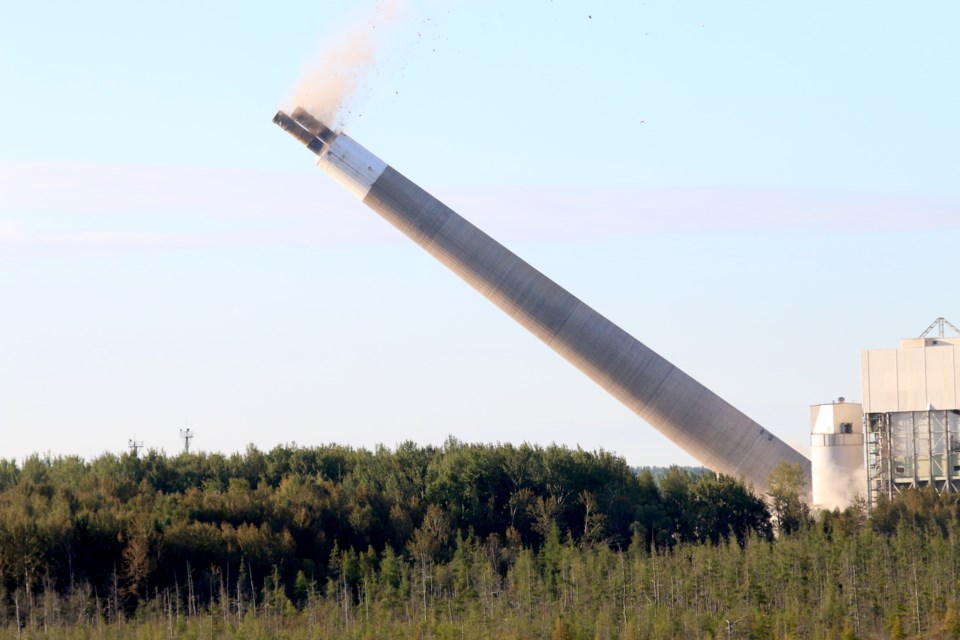THUNDER BAY - A familiar structure that stood over the city of Thunder Bay for more than 40 years came down in a matter of seconds.
The 200-metre stack at the former Ontario Power Generation’s Thunder Bay Generating Station was brought down during a controlled demolition early Thursday morning by Budget Demolition, which took control of the site after it was decommissioned in 2018.
“It went 100 per cent as planned,” said Jeremy Later, site manager with Budget Demolition. “All the modelling was exactly what we expected. So we can’t be any happier than how it happened.”
The stack was believed to be one of the tallest structures in Northwestern Ontario. Bringing down such a tall structure can be a challenge, Later said, which includes safety protocols and modelling to ensure it falls in the right place.
Budget Demolition worked with engineering firms ASI Group Ltd. and DST Consulting Engineers to help bring the stack down, as well as having assistance from the Thunder Bay Police Service and Ontario Provincial Police to make sure spectators remained at a safe distance.
“We always plan for the worst-case scenario but everything on this one went 100 per cent as planned,” Later said.
This particular stack, which was added to the Generating Station in the 1980s, also included three inner flues for the three boilers, making the demolition even more complicated.
“Stacks are a little more tricky,” Later said. “Especially with the three flues in there and you are dealing with the height as well. This structure was 650 feet so it’s pretty tricky. But it’s easier cleaning it up than say the building.”
“The concrete shell of the stack on the outside that everyone has probably seen around Thunder Bay got designed cut with explosives on the front, but inside the stack, there are also three flues for the three boilers at one time, that actually got cut the same way with other explosives and they go off within milliseconds of each other so it falls a proper way.”
The stack came down in an empty field toward Lake Superior. Later said from the beginning of the demolition project, which began earlier this summer, the plan was always to bring the stack down first.
“We always wanted to blast the stack first just because the building will be here still to help from debris falling into the switchyard. We always wanted to keep it away from the water ways, so that’s why we landed it in the field.”
The dust cloud produced after the stack crashed to the ground was also minimal, with a light breeze clearing the area after 20 minutes and blowing it out over the lake.
Approximately 98 per cent of the materials from the stack will be recycled and should be cleaned up in the next two to three weeks. After that, Budget Demolition will turn its attention to the main structure.
“The next stage is getting the precipitators ready,” Later said. “We want to blast those in December. Everything is staying on schedule and it’s going well for us.”
Following that, the boilers will be demolished in the spring and summer.



